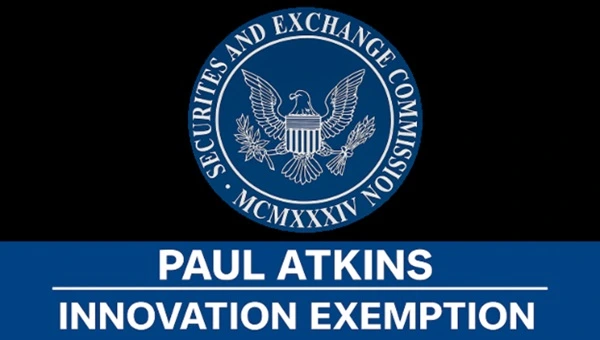

Atkins is taking a very different path from former Chair Gary Gensler. Under Gensler, the SEC led with enforcement. Dozens of lawsuits were filed. Many of them targeted crypto projects for alleged securities violations. Atkins wants something else. He wants clear paths to compliance. He believes the current system doesn’t work well for decentralized systems.
- Rules built for brokers and exchanges don’t fit apps with no central control.
The innovation exemption could help. It would allow certain crypto products to launch with regulatory permission. That permission would be tied to rules—conditions that reduce risk to investors.

What Would the Innovation Exemption Do?
Under the proposed framework:
- Conditional Relief: Firms that satisfy predetermined conditions, such as risk disclosures, limits on investor caps, or compliance guardrails, could operate with reduced regulatory oversight.
- Public-Private Feedback Loop: The SEC will gather input via “notice and comment” rulemaking processes, improving transparency and aligning rules with actual market needs.
- Speedy Market Access: The exemption could accelerate on‑chain product launches while permanent rule reforms are drafted and finalized.
Atkins highlighted that blockchain protocols have proven resilient during market stress, sometimes more so than centralized players. He emphasized that developers publishing open-source code shouldn’t be penalized for how others might use it, highlighting a concern that regulating code could infringe free speech.
Why It Matters: Unlocking the U.S. as a Crypto Leader
This initiative maps to President Trump’s broader ambition to position the U.S. as the world’s premier crypto hub. By carving out trusted regulatory pathways for innovation, the SEC seeks to lure back international development, much like the stagnant or hostile environments seen under Gensler’s era that prompted talent migration abroad.
DeFi token indexes like Uniswap (UNI) and Aave (AAVE) surged on the news, with gains of 15–23% reported amid the announcement. These moves underscore how regulatory clarity can act as a powerful catalyst for investor confidence in digital assets.
Industry Response: Sandbox vs. Wild West
Critics, including some Federal Reserve officials, warn that a poorly defined carve-out could expose the financial system to systemic risks via interconnections between DeFi and traditional finance. They say fully unregulated access could create gaps akin to “DeFi wolves in sheep’s clothing.”
Many experts instead propose a regulatory sandbox model: time-limited, supervised pilots that allow regulators to observe, gather data, and calibrate oversight. This approach has been used abroad in jurisdictions like the U.K., Singapore, and the EU.
A Delicate Balance of Innovation and Investor Safety
Atkins appears to be aiming for that middle ground, conditional relief that supports innovation without throwing investor protection to the wind.
The upcoming policy document from the SEC’s Crypto Task Force, spearheaded by Commissioner Hester Peirce, will likely define:
Zones of eligibility
- Compliance guardrails (like disclosure requirements)
- Sunset clauses for temporary exemptions
- Oversight and enforcement triggers
Peirce vocalized support for protecting code publishers under free speech rules but warned that “centralized entities can’t avoid regulation simply by hiding behind a DeFi label.”
Comparison to Global Precedents
Internationally, regulatory sandboxes have been the trend. The U.K.’s Financial Conduct Authority sandbox saw several crypto firms participate under controlled conditions before scaling up. Singapore’s MAS took a similar trajectory.
- In contrast, the U.S. under Gensler leaned toward enforcement with limited guidance.
Atkins’ proposal could meld mainstream regulatory features with sandbox elements, but is unique in offering formal exemptive relief—a new hybrid model.
The Bottom Line
For innovators and investors, the key deadlines are:
- The first public draft of the task force guidance in the coming months.
- Public comment period under the SEC’s notice-and-comment rulemaking framework.
- Potential pilot programs before year-end, to offer real‑world proof of concept.
Regulatory watch parties are forming in Congress, too. The CLARITY Act and GENIUS Act, aimed at defining digital asset treatment, are slowly moving through committees.
The interplay between congressional lawmaking and agency-led exemptions could define the decentralization playbook for years to come.
He has worked with several companies in the past including Economy Watch, and Milkroad. Finds writing for BitEdge highly satisfying as he gets an opportunity to share his knowledge with a broad community of gamblers.
Nationality
Kenyan
Lives In
Cape Town
University
Kenyatta University and USIU
Degree
Economics, Finance and Journalism


Facts Checked by Nakul Shah

 Fact checked by
Fact checked by 
 eabungana@gmail.com
eabungana@gmail.com 